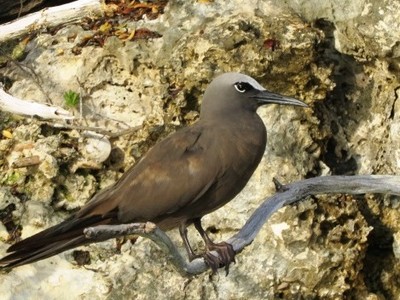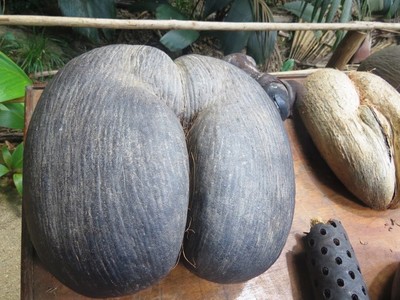Aldabra Last Sanctuary
28 January – 9 February 2017
Dar es Salaam to Mahe aboard the MS Island Sky
Saturday, 28th January 2017 - Dar es Salaam, Tanzania
On a very warm afternoon we all gathered together safely aboard MS Island Sky, grateful for the air-conditioned comfort, a friendly welcome and a cup of tea. We had made it here! One half of us had flown in overnight from London to join the other half fresh from a two week overland train journey from South Africa. The mandatory life boat drill reassuringly and efficiently carried out we had time to complete our settling in before we met the expedition team, led by the versatile Pam Le Noury, at our briefing for the voyage to come. After our first evening meal on board it was time for some rest and few of us noticed as Island Sky set sail for Zanzibar sometime after midnight.
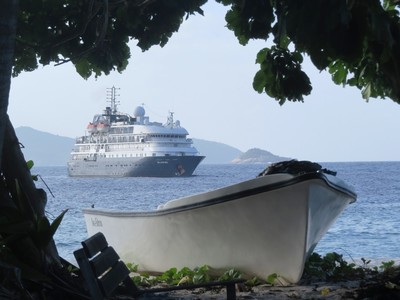
Sunday, 29th January 2017 - Zanzibar
Breakfast overlooking the dhows gathered at the bustling fish market was a fitting start to a day that promised much. Even the very name Zanzibar suggests all that is exotic and exciting. We were loaded into minibuses for our tour of Stonetown each accompanied by a local guide as we made our way, mostly on foot, through the narrow streets between the houses built with coral stones, that gave the area its name. We worked our way through the list of attractions the Sultan’s Palace, the House of Wonders, the Old Fort, Tippu Tip’s House and the refreshment break at the delightful Serena Inn gave a very welcome and timely pause for thought, sipping coconut juice and overlooking the Indian Ocean contemplating the rich history of an ancient town. Perhaps the most moving experience of the morning, for many, was the visit to the Anglican Cathedral. The body of Edward Steer, the founder lies buried behind the altar, and a cross made of wood taken from the tree under which David Livingstone died hangs on the wall, but it was what awaited outside that proved more emotionally affecting for some. Close by is the Memorial for the Slaves. A simple structure made of concrete statues chained together in utter dejection in a sunken pit. The thought of 75 men, women and children being confined for two days within the nearby holding dungeon that we briefly looked in on was heart rending. On a lighter note it came as a surprise to some of us to discover that Freddie Mercury, of pop group Queen fame, was born here of Persian and Indian parents, who were employed in the very buildings that we had been visiting.
After lunch on board we either took free time to explore the town some more or joined one of the two excursion groups bound for the Spice Farm or the Jozani Forest tour. The spicy group took a short drive out of town calling in at the Maruhubi ruins, an elaborate structure from the nineteenth century, designed to cope with the demands of housing 4 wives and 99 concubines. There was no sign of a rest room for the man himself so he was clearly made of high calibre constitution. Nearby we saw barefoot craftsmen working with primitive looking hand tools to somehow produce substantial, seaworthy dhows from uncooperative looking raw tree branches. The evidence of their efficacy, and that of the fishermen, lay drying on nets laid on the ground not many yards from the sea. Millions of tiny fish were being sundried in preparation for sale. Passing through Bububu, the aptly named location of the end of the railway, we reached the government run experimental spice farm. Walking through the various plantations we saw the production of agricultural products upon which Zanzibar has been reliant, such as nutmeg, cloves, lemon grass, cardamom, turmeric, cassava, cinnamon, pepper, jack fruit and many other things. At the end of the walk we were riskily entertained by a gentleman of the name Khamis or butterfly. A very dextrous chap he was able to shinny barefoot up a coconut palm trunk, performing acrobatic tricks on the way whilst singing to us most of the time. Following our activities of the day we all scrubbed up and donned best bib, tucker and posh frocks to join Captain Håkan Admarker for a Welcome Cocktail Party followed by the Welcome Dinner.
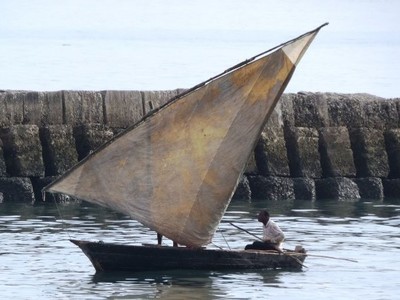
Sunday, 30th January 2017 - Day at Sea
A bright sunny day and a relatively benign sea gave us the opportunity for some relaxation, as well as a chance to learn from the lectures given by the expedition team. Observant up on deck watched a red footed booby quartering the sea and catching the occasional flying fish which recklessly took the air, disturbed by our passage. First up with the presentations was Pierre Malan, our on board fishery expert, who gave us a concise history of the trading empires that have waxed and waned along the eastern coast of Africa in his talk entitled “The Wind is Free”. The trade winds, we learned, were vitally important for the centuries old practice of transporting of goods such as ivory, gemstones, wood and, alas, slaves. From the time when Herodtitus refused to believe that Phonoecian sailors had actually circumnavigated around Africa (because they reported the sun to be on the right whilst they were sailing west) to the present day not too much has changed as we had observed yesterday when we saw local dhows carrying multifarious goods in a time honoured style.
Tom Hiney was ideally qualified to give us his presentation “Endangered Endemism” having spent time in his (even) younger days working in conservation on the Seychelles Island of Cousin. Happily he gave us some good news for a change on the conservation front in the West Indian Ocean. Mauritius Kestrels came back from a population of just 4 individuals to a peak of 800, thanks to the famous efforts of Gerald Durrell. Hooray ! There were equally heartening stories about Seychelles Warblers, Magpie Robins, Paradise Flycatchers, Hawksbill Turtles and Giant Tortoises too. Now we were even more eager for arrival in the Seychelles.
Monday, 31st January 2017 - Assumption, Seychelles
In glorious sunshine and with fairly benign sea conditions we made good progress throughout the morning heading for Assumption Island, our first landfall in the Seychelles. There was ample time for a couple more onboard presentations from the expedition team. Those who had not attended the hilarious onboard quiz the previous evening now had an opportunity to experience the relentless jocular banter of the host, and our head of security Chris Lockie. His presentation was entitled “Piracy in the Indian Ocean” in which he outlined his “day job” of ensuring our safety in this potentially dangerous region. It was simultaneously amusing and reassuring and everyone was pleased in the knowledge that if it came to a fight he would be on our side. “Aldabra, Protecting the World Heritage Site” was the title of the second presentation of the morning given by Guy Esparon. Having lived and worked on Aldabra for a number of years his knowledge of the island is second to none and in relaxed and charming style he conveyed the heartening message that protection measures for this site of international importance are working. Just before lunch we arrived at Assumption Island. The turquoise fringe where sea met land looked inviting, and, although it was very hot, it was great to be heading for terra firma, with a promised “wet landing” for our first foray in the Zodiacs.
We received a charming welcome on the beach from Ian and Staniella, the resident representatives of the Island Development Company. In a sea the temperature of a very pleasant bath we were put through our basic snorkelling checks to make sure we were all ready for our exploration of the underwater world. A short walk, as the heat of the day relented a little, took us to the “airport”. A substantial strip of metalled surface built across the coral rocks of the island. The “In” and “Exit” lounges were housed in the same tin roofed open shelter, and that was not the only unconventional feature of this air traffic hub. Two hours before the arrival of each plane the runway has to be checked and cleared of giant Aldabra tortoises we heard. With a little bit of hunting beneath the bushes we were able to catch glimpses of some of these improbable creatures. Those fortunate to be in the right place at the right time heard a crashing in the undergrowth as one of the living tanks emerged to take an inelegant, but effective, wander across open ground. Fantastic !
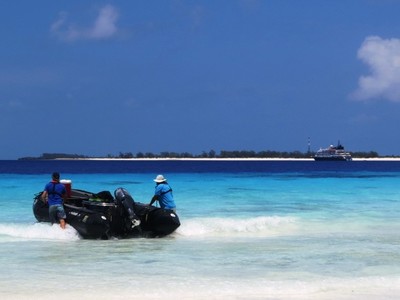
Wednesday, 1st February 2017 - Aldabra
We were here at last – Aldabra! This is the largest raised coral atoll in the world, a Mecca for naturalists and the World Heritage site about which we had heard so much. The sun appeared as a large orange ball and rapidly rose over the research station on Picard Island as the Zodiacs were readied for our landing. The timing of the tides necessitated a 7.30 am start. We were soon all ashore and split off into various groups for walks along the shore and into the undergrowth, a resident ranger accompanying each group. There was no need to search for the endemic land, flightless land rails as they came to greet us emerging from beneath the ranger accommodation buildings or from the bushes, some of them shepherding chicks. Giant tortoises where obviously accustomed to people and wandered alongside us searching for any juicy leaf that may come within reach. The “raised coral” was much in evidence alongside the beach paths with very prominent pavement like protrusions clearly showing the constituent fan, plate and cushion forms of old reef growths. Out in the lagoon we could see the very characteristic mushroom, shaped champignon rocks. The dark shapes of rays could be seen swimming over the sand in the clear turquoise blue sea. At Lagigi, where stands the plaque that states that Aldabra is a gift of nature donated by the Seychelles to the rest of the world, there were three impounded fishing boats secured to the shore. Dealing with unwanted trespassers, it seems, is an equally important part of the nature warden job description, along with monitoring the wildlife. We learnt more about the scientific monitoring that takes place on Aldabra when April and Adam of the Seychelles Island Foundation(SIF) delivered presentations on board outlining the recording and tagging programmes that are carried out for the different species of interest, along with the opportunistic observations that they make.
Species diversity it seems is fairly low, but endemicity is actually very high, making the atoll unique. Unwanted invasive species such as rats and cats are dealt with and the use of “Judas” goats has led to the total elimination of their kind by the process of betrayal. Satellite monitored individuals giveaway the whereabouts of social groups which seals their fate. A sneaky but effective technique. An afternoon snorkel from Zodiacs anchored close to the edge of the reef gave the chance for a dip, but underwater conditions were not ideal for visibility. A Sunset Zodiac Cruise, departing from the Island Sky at about 5pm was a superb way to round of a very long day. The 1.5 hours of weaving through the West Channels entrance to the lagoon was very atmospheric as the sun sank towards the horizon. There were fish aplenty and occasional turtles in amongst the mangrove roots. Frigate birds wheeled overhead marauding the harassed red-footed boobies as they were presumably heading home after a long day at the marine office. We approached many of the famed “champignon”. Rocks, some so severely undercut that they had toppled over. For monitoring purposes each one, unromantically, has a number rather than a name. It seemed fitting though to name one of the toppled unaccounted for protrusions “April” in honour of the head warden. Wendy and Chantal met each Zodiac at some point in the cruise to hand out some very welcome liquid refreshment, courtesy of the bar staff. We had to return to the ship at the allotted hour, but it was with reluctance we left behind the sleepy lagoon.
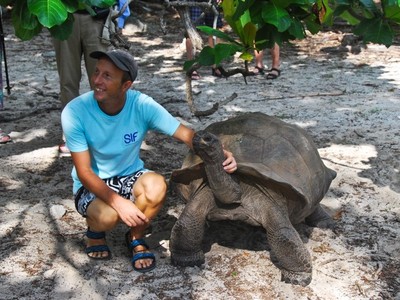
Thursday, 2nd February 2017 - Aldabra
Thursday morning dawned bright and we took to the Zodiacs at 7.30 am to head back into the lagoon of Aldabra once more. Our entrance this time was via the “Grande Passe”, Island Sky having repositioned overnight. After a mildly, bouncy traverse at the mouth of the channel we took a turn to the right to get close into the mangroves wherein the boobies and frigate birds were nesting. Normally these two species are not on the best of terms as the frigate birds specialise in professional mugging of the boobies, but here in trees all was calm. It appeared that the boobies, out gunned in the air, have superior weaponry for combat at tree level in the shape of their stout, stabbing beaks. Brown noddy terns fearless of our approach were passing the time of the day in smaller numbers perched along the shore edges. Here and there were pairs of white fairy terns, egrets and occasionally a bright orange fody would flit between the overhanging branches. A couple of hours passed all too quickly and it was time to retrace the route back to the ship. Hardier souls pressed on for a longer ride through the lagoon to rejoin the ship outside the Western Channels . Whilst we were enjoying a splendid lunch out on the lido deck, or down below, the expedition team were setting up a Zodiac snorkelling platform located just inside the opening of one of the Western Channels, Dubois by name. There was a frisson of anticipation as this was to be a drift snorkel, with the idea of the incoming tide doing all the propulsion work for us. The drift exceeded all expectations. The flowing tide brought in clear water and a multitude of fish. As we gently moved along with the flow the shapes of turtles and nurse sharks could be seen either hugging the bottom in the centre of the channel or whisking through at high speed. The variety of size, shape, colour and behaviour activities of the fish we saw was incredible and everyone had a “did you see …..?” story to tell when we got back on to the awaiting Zodiacs for the short trip back to the ship. It was short in distance but not in time, as surface conditions had changed a little and the last Zodiacs had to wait for Island Sky to reposition before everything could be loaded aboard.
Friday, 3rd February 2017 - Cosmoledo Atoll
Overnight we had left Aldabra behind. Today we were visiting Cosmoledo Atoll, still within the same island group but even less visited than Aldabra, and completely uninhabited since 1992. Here is the nesting place of the largest colony of sooty terns within the Seychelles, with over 1 million birds returning annually to lay the 1 egg per pair. A relatively leisurely start at 9 am we set off for the long run in to the South East Island, entering the lagoon through yet another Grande Passe. We enjoyed a pleasant Zodiac cruise along the rocky shore with sparse vegetation being able to get in close to the nesting masked boobies; a great photo opportunity. Further along the coast we took some leg stretching shore leave pulling into a small beach alongside which were a few trees, which afforded a highly desirable perching spot for the red footed boobies. Possibly reluctant to give up their position they once again were tolerant of a close approach for taking photographs. Beneath the water too a collection of rays obligingly remained in situ sheltering beneath the shade of the trees.
There was a second foray ashore, landing once more on a sandy beach with the chance for a little more exploration a short distance inland, picking the way through the Pemphis and Heliotropium bushes. Then it was back to the ship for lunch, a longish ride once more, as the shallow waters did not permit any corner cutting. Our second sortie of the day was to Grande Ile, also known as Wizard Island. This time we turned right once through the Grande Passe. Again we met some very shallow water which necessitated a knee deep wade ashore from the Zodiacs to the top of the enormous beach. Once ashore there were opportunities to walk with the naturalists looking at the evidence of the former habitation in the form of remnant introduced plants or to mount the highest vantage point to take in the whole island vista. Everywhere there were sooty tern egg shells scattered on the ground and camera shy cisticolas could be heard “tick-tick-ticking” in the bushes. Fresh tracks leading from the sea terminated at a heap of disturbed sand at the top of the beach tracing the path of a successful egg laying turtles. Cats and rats have been of concern to conservationists and there are hopes that finances for management of the island will materialise. Let us hope so for it is a wonderful wilderness site. A rising tide made for a shorter wade back to the Zodiacs as we finally departed at 6.30pm, just in time to spruce up for dinner. That was not the end of the days entertainment. There was still the presentation “Life in the Royal Marines” to be delivered by Chris Lockie. It was scheduled for after the nine o’clock watershed, in case there might be adult content. It turned out to be a very good presentation which raised much laughter and increased our respect for the tough guys who made it through the gruelling training programme to become Marine Commandos.
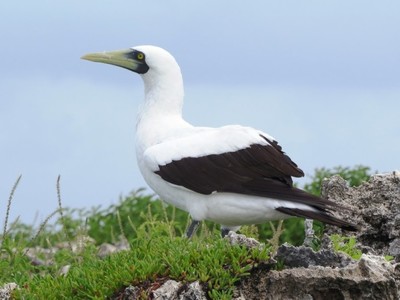
Saturday, 4th February 2017 - Providence, Farquhar Group, Seychelles
We spent the morning at sea, making progress towards the Farquhar group of islands. It was a chance for a little relaxation or maybe some gentle body toning at one of the Wendy Malan’s Shipilates classes. Tom, our ornithologist, gave a very interesting account of a project he worked on during his stay on Cousin Island in a presentation entitled “How to Grow a Coral Reef”. Following an El Niňo event in 1998 many coral reefs around the world suffered from water temperature changes resulting in many under water scenes of decimation. Recovery is possible when conditions improve but it is a slow process without intervention. If small lumps of living coral are transplanted from healthy reefs they can, after a little early nurturing, be cemented into place to begin the process of regrowth. Before lunch there was time for a recap to share a few thoughts and observations on what we had seen over the last couple of days. It was good to put names to some of the many plants and reef fish we had been seeing. On our arrival at the southern end of Providence Island two scout Zodiacs were quickly launched to check out the conditions for landing. With a falling tide and a shallow passage through the reef it became apparent that a landing in this location would be imprudent, so immediately the zodiacs were hitched to the stern of the Island Sky and we set sail for the north of the Island.
Thanks to Guy’s local knowledge a suitable landing site was found and as soon as possible we were all taken ashore. The approach to the long sandy beach was again shallow and some had a little wading to do over a flattish sea bed festooned with a growth of eel grass much like a sub-aquatic lawn. On shore we split into 3 walking groups with the choice of exploring the coast, either East or West, or carefully following a path hacked through the vegetation to the former settlement, taking care of the very spikey plant sometimes known as the “lawyer vine”. It has the reputation that once it gets its very sharp hooks into your clothing or flesh it is very hard to remove. Once we had penetrated to the interior we were able to investigate the remnants of the settlement which had been devastated by a fairly recent cyclone. Corrugated iron roofing sheets were liberally scattered around the open area, and even some substantial block built walls were half destroyed by what must have been some very powerful winds. Inside the remaining buildings there was the air of the “Marie Celeste” with abandoned beds, cupboards and tables randomly arranged amongst trailing electrical flexes. All around the jungle was quickly taking regaining control with trees leaning through the church door and advancing into the body of the kirk, as it were. Outside there was evidence of semi industrial activity with concreted raised platforms and rusting pipes. Most likely here had taken place the drying of copra, as we were surrounded by many surviving very tall coconut palms. The fate of those that had succumbed to the winds was marked by a neat ring of germinating coconuts at the place where the broken crown of the tree fell to earth.
It must have been a prosperous and picturesque place judging by the horticultural/gardening remnants. Blown over papaya trees were still yielding fruits at in a prone attitude and the groves of banana plants were maintaining strict discipline tightly packed in neat rows. A bright purple bougainvillea was climbing rampant wherever it wished forming a glorious back drop to both spider and Seychelles lilies. Footprints in the sand indicated that there was at least one surviving cat and there were sightings of healthy looking chickens also. One giant tortoise ambled into the clearing only to take exception to our presence and clatter back into the undergrowth. Walkers returning from the various directions were welcomed back to the beach camp with a cooling glass of red berry smoothie, kindly brought ashore by the catering staff. Seated on the beach Guy gave an impromptu basket weaving demonstration, rapidly fashioning, with very dextrous fingers, three unpromisingly looking lengths of coconut frond into a sturdy basket. This was something he had done many times as a child during school holidays making the ultimately biodegradable basket. It is a skill that he passes on to the next generation in school demonstrations, and one that he has now given to us too. Thank you Sir. It was getting dark as the last of the Zodiacs was loaded aboard, but, thanks to expedition leader Pam’s persistence we had once again had a very full and fulfilling day.
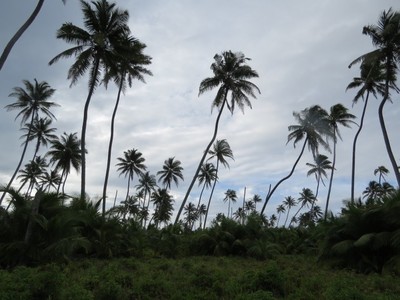
Sunday, 5th February 2017 - Alphonse, Seychelles
It was very pleasant to have another “lie in” as we spent the morning at sea, heading for Alphonse Island. The educational programme continued with two more presentations from the expedition team. Pierre was first speaking on “Oceanography of the Western Indian Ocean”. Recounting some highlights from the many years that he has spent working in this field he explained some of the techniques used to study this, the smallest of the world’s oceans. It is unique in that it is bounded by land to the north which affects the weather, the direction of currents and thus the course of human history. One fact we learned was that a flow of water of 100 million cubic metres per second equals 1 Sverdrup, and there is no knowing when that piece of knowledge will come in handy. Thanks also to Tom we gained an insight into how World Heritage Site status is gained during his presentation entitled “Do You Know UNESCO?” The itinerary for our journey includes no less than three World Heritage Sites:- Zanzibar, Aldabra and Vallee de Mai, which just leaves 1049 left on earth to visit. Well done the Seychelles for achieving and maintaining this high status recognition, we all say.
There was the threat of rain as we arrived at the island of Alphonse, but thankfully it didn’t materialize. Shaped like an arrow head embedded in a crispy onion ring Alphonse had to be approached across a large lagoon but only after entrance through the one gap in the large guarding ring of coral reef had been found. Ashore proved to be very pleasant (apart from the mosquito bites!) as befits a privately owned, eco orientated resort. Prices in the bar and shop were outrageous, but the complimentary hot drink and a bun ameliorated the situation somewhat. Three levels of walk were on offer once again with the options ranging from a circumnavigation of the island to a gentle potter. The island boasts a prodigious list of visiting bird species, despite having populations of rats and cats, and wedge tailed shearwaters nest here, so plenty to look out for – including the potential hazard of meeting a plane making use of the airstrip that bisects the island. The snorkelling proved to equally good either from the beach or out on the pontoon set up near the lagoon perimeter. The corals and the many fish were very colourful in the brighter sunlight, and for those viewing in black and white there were prodigious numbers of razor tailed sergeant majors. It had been another good day at the office for many of us as we made the 15 to 20 minute Zodiac ride back to the ship, older, wiser and happier.
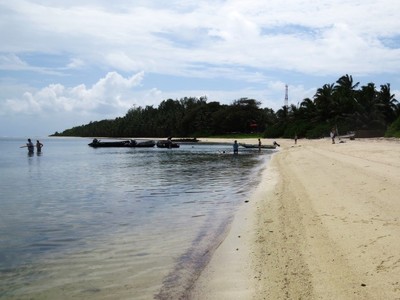
Monday, 6th February 2017 - Desroches
Another day in paradise. We had leisurely start to our day as we landed by Zodiac on the golden sands of Bombay Beach. Conditions were very gentle and the sun was gaining strength. Guy had been busy before our arrival weaving a coconut leaf basket once more and now it contained a young palm tree which he had transplanted to making a fitting welcome display. Shade was at a premium as the temperature rose and we set off in our various walking groups through areas of sparsely planted coconut trees admiring the blooms of Seychelles lilies planted along the road edges. We understood that the island was in the ownership of the Four Seasons Hotel Group and that the largely empty “luxury” facilities were undergoing refurbishment. The very well laid out kitchen garden was very neatly kept in order by three Indian employees and we watched as they gathered fresh green chilli peppers. Some of the giant inmates at Tortoise Camp came out for a stroll as we passed by. Back on board ship it was BBQ time on the lido deck. It was an exceptional display of culinary artistry, and very tasty too. Our resident musician, Dong, sang and played the guitar to complete the idyll. The afternoon was of a relaxed nature. Zodiacs took us between the ship, shore and the snorkel platform that had been set up close to the barrier reef. Plenty of time to snorkel, swim, explore further or just get a really good tan. The last recap and briefing of the cruise alerted us of the change of scene to come tomorrow as we move into the “granitic islands” of the Seychelles. Bring it on!
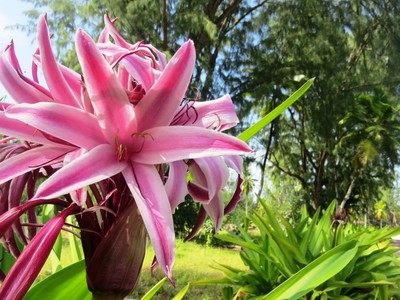
Tuesday, 7th February 2017 - Aride and Curieuse
Warnings of very wet landings through breaking surf had made some of us a little anxious about the prospect of getting ashore on to Aride, the first granitic island of our tour. However with expert driving by both the expedition team and the local inflatable it turned out to be an exciting and safe experience – but it was very wet. Once the surf boys (and ladies) got us safely ashore they did a quick change into their official guide uniforms before leading us off for an exploration of this enchanting island. The walks all started from the sandy beach and before we had even passed through the accommodation units we were encountering the local wildlife. Endemic skinks fearlessly and conveniently posed at eye level on tree trunks. Maybe four or five magpie robins foraged in the leaf litter that had been raked over to assist their efforts. It did not sound like many but it represented a very significant proportion of the whole island population. Passing by through the house built by the Cadbury family we walked through a garden area where amongst the many interesting plants there a couple of thriving Wright’s gardenia, which is something that is unlikely be seen anywhere else on earth.
Here and there tucked under tufts of grass or between tree roots were white tailed tropic birds tending little fluff-ball chicks. An enormous fig tree spanned an impressive area of sculptured granite rocks alongside the path. Numbered posts marked the location of turtle nests. The ones out in the open were more likely, we learned from the very knowledgeable guides, were likely to produce female baby turtles, whist those in the shade should produce males. Hot chicks and cool guys was given as a useful aide memoire. The track to a sharp turn up the hill towards the high point of the Aride and scrambling up a steep rocky track tested muscles that hadn’t been used for a while. It was hot work but the effort was amply rewarded by the view out over the ocean on the far side of the island from a vantage point of exposed granite Large numbers of frigate birds wheeled and hovered before us being constantly re-supplied with birds from the nesting colony below. When the time came to return to the Island Sky we boarded the Zodiacs for a second encounter with the breaking waves, which was still good fun, and still potentially very wet. Island Sky made the short journey across to the island of Curieuse over lunchtime and with a bit of drifting and manoeuvring got us into position for a short Zodiac ride to land at a much calmer beach, guarded on its flanks by some dramatically weather sculptured granite sentinels. Swimming, snorkelling, a mangrove boardwalk or just relaxing were all on offer for the afternoon activities. The setting was guide book idyllic for whichever choice was made. Back on board it was time to dress for dinner as Captain Håkan Admarker hosted the Farewell Cocktail Party followed by the Farewell Dinner. The captain thanked many of his staff and expressed the hope that everyone had had an enjoyable cruise.
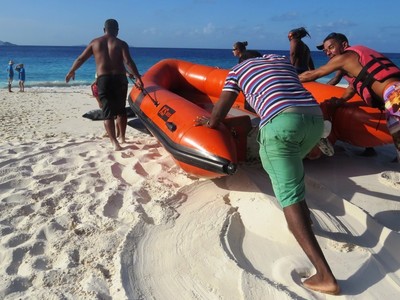
Wednesday, 8th February 2017 - Praslin and La Digue
The last day of action dawned bright, clear and calm once more. Well practiced by now we were soon loaded into the Zodiacs for the short ride to the Island of Praslin for the unusual treat of a dry landing on to a pontoon. Amidst the confusion of people and traffic meeting the inter-island ferry arrival we boarded the comfortable, air-conditioned coaster minibuses for a short ride to the second Seychelles World Heritage Site, the Vallee de Mai. Here we walked on very well maintained paths beneath the monstrous leaves of all six palms endemic to the Seychelles, but the famous Coco de Mer was undoubtedly the star of the show. There was a magical, primeval feel to the forest. The air was still and the valley silent, until a breeze at canopy height shook the mighty fronds which rattled together like tin roofing sheets being shaken by the hands of angry gods. There is little wonder that General Gordon of Kartoum concluded that this was the site of the Garden of Eden.
We were presented with impressive statistics for the Coco de Mer regarding its ponderous lifestyle, longevity and heavy weight crowns for the largest seed and leaves of any plant in the world. No one could give a clear answer to the question of how these massive 40lb nuts can be distributed uphill to germinate on the higher slopes. It seems that the nocturnal gods were needed again as they deal with fertility matters. There were endemic birds to be seen too with the Blue Pigeon and very rare Black Parrots putting in appearances, and multifarious skinks skulked amongst Pandanas roots. After our forest sojourn we visited the 2.5 km long Cote d’Or beach where we were served am very refreshing non-alcoholic cocktail. The sea was warm and many took advantage of the chance for a quick swim. Island Sky repositioned once more and after lunch we transferred by Zodiac to the small town of La Passe on the Island of La Digue. Whisking along the very bumpy roads on the back of open sided, wooden seated bus/trucks was a good, but testing, way to see local life. Very neat children were making their way home and the tracks were filled with cyclists, mainly tourists but also children and mothers holding crying children. Those who did the coconut processing visit saw how things were done in a very rudimentary way still. Hand husking, wood drying and cow driven grinding. Aesthetically pleasing methods, but it looked very hard work. We all gravitated to the most photographed beach in the world, either directly by shuttle truck or on foot via vanilla plantations and the giant tortoise enclosure. The water was as warm as always for those who took a last dip in the Indian Ocean before depart for home tomorrow. Bag packing time was approaching, but there was still the Voyage slide show to see this evening. We were looking forward to reliving the many wonderful days of our journey to some of the most beautiful and unspoilt islands of the world.
End of Voyage
For further inspiration, view slideshow of images taken during the voyage






